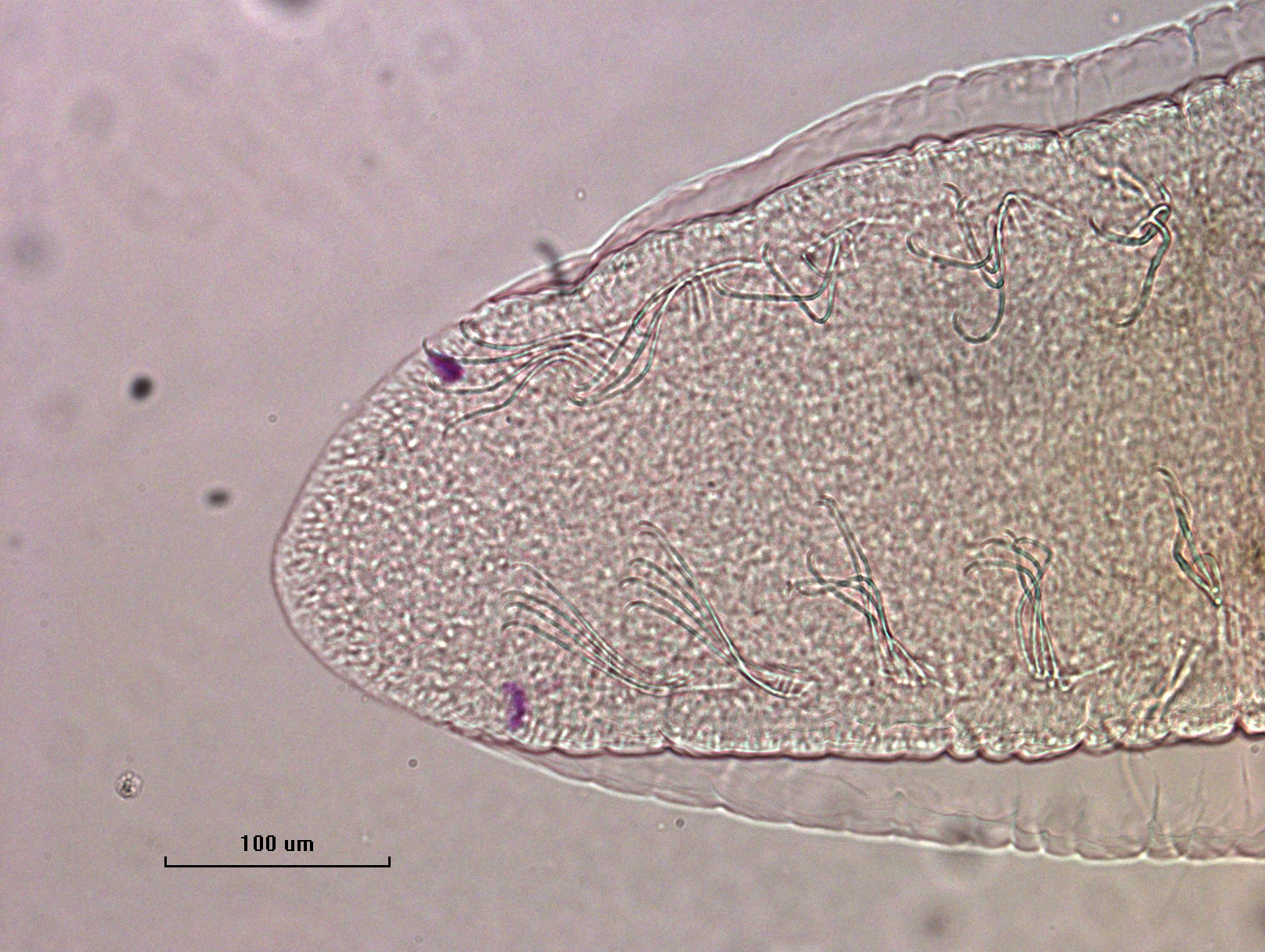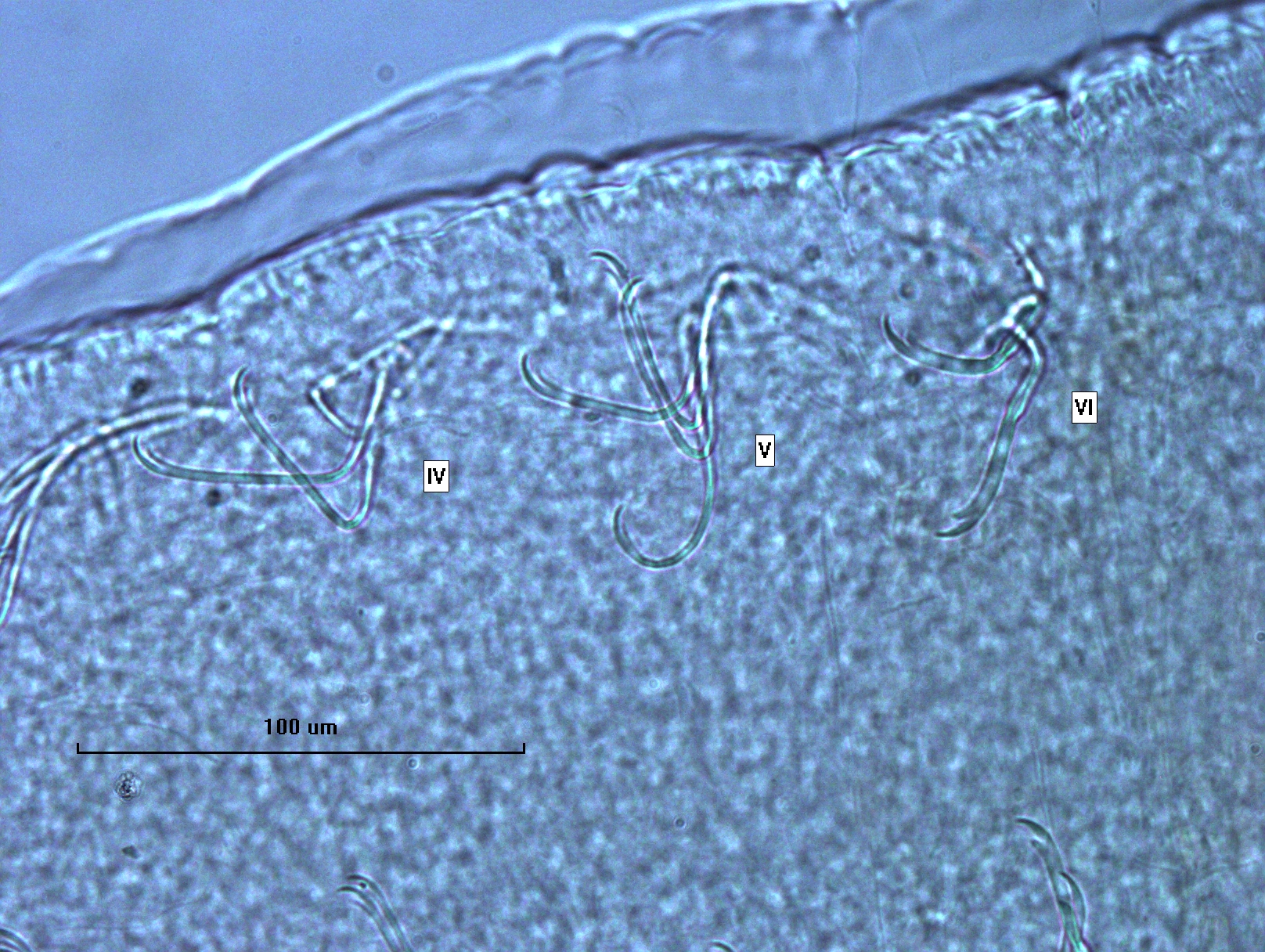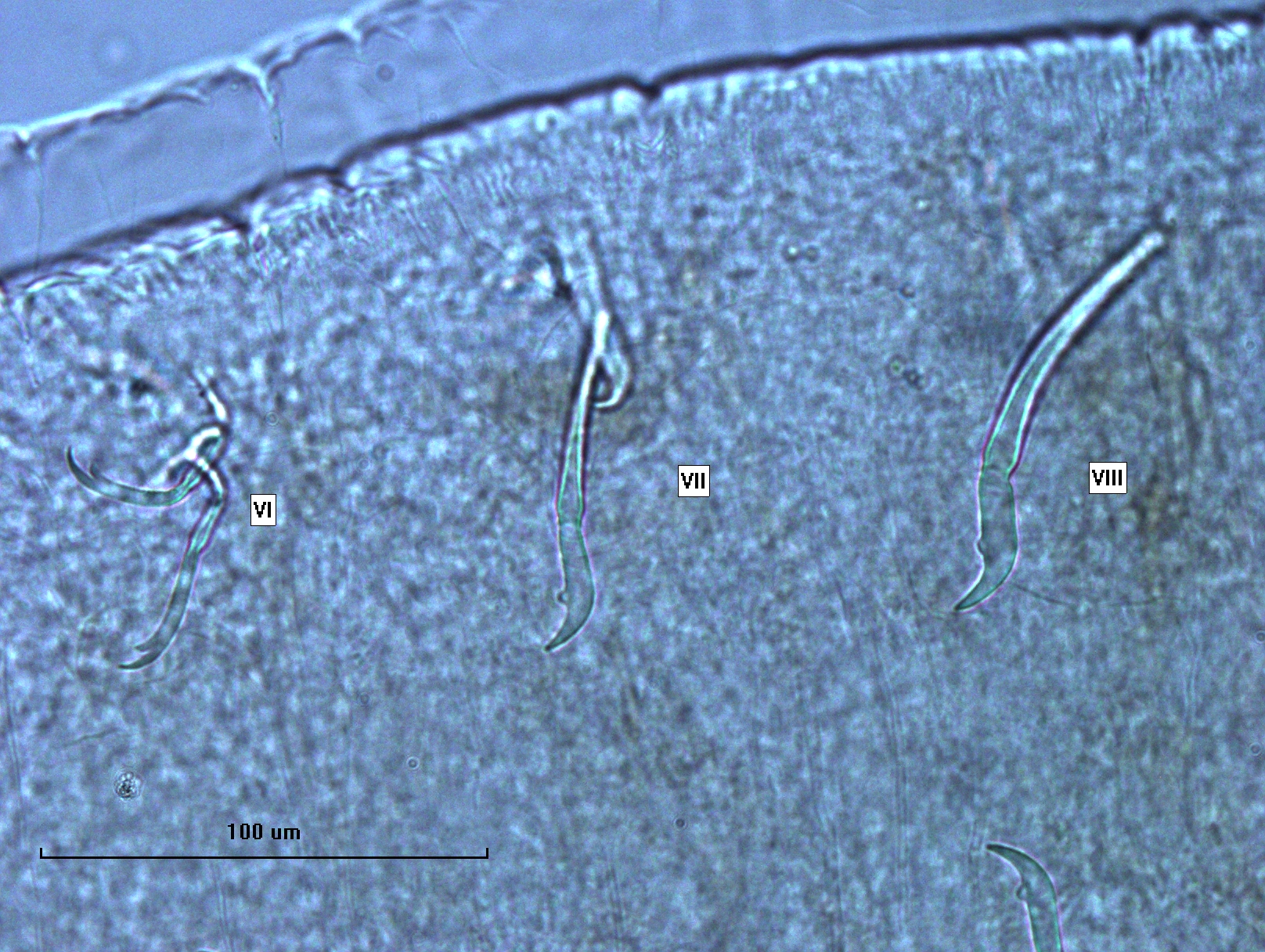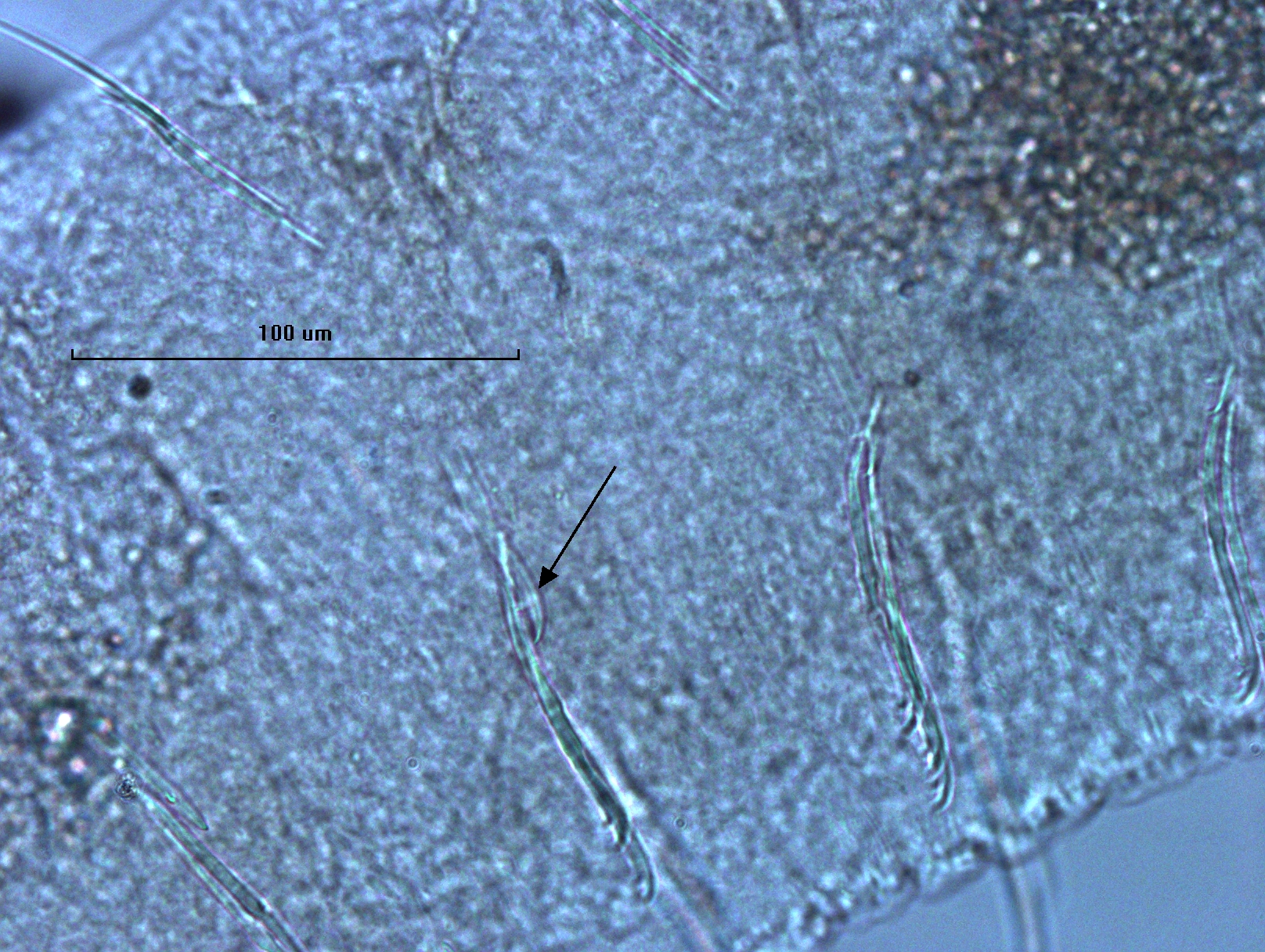
Nais bretscheri Michaelsen, 1899 is a freshwater oligochaete worm that is uncommon in the Great Lakes. It is a naidid worm with dorsal bundles beginning in VI and ventral bundles beginning in II, hair chaetae in the dorsal bundles, and without a proboscis. Worms in the genus Nais all have 1–2 hair and needle chaetae in each dorsal bundle with simple-pointed or bifid needles; the ventrals usually change between V and VI, often quite dramatically. This change is even more pronounced for N. bretscheri, which has enlarged and giant ventral chaetae that start in VI, though the giant ventral chaetae may not be in every bundle. N. bretscheri has dorsal bundles starting in VI with 1–2 hair chaetae and 1–2 bifid needles with equal, parallel teeth. Anterior ventral bundles of II–V have 2–5 chaetae with thin, curved upper teeth that are about twice as long as the lower tooth. Starting in VI, there are 1–6 variable chaetae per bundle which may have a short, thin upper tooth, be enlarged with a long, thick upper tooth that is straight, or giant with a long, thick upper tooth that is straight and a lower tooth which is rudimentary or absent. Eyes are usually present. If mature, there are two penial chaetae per bundle. It is possible that N. bretscheri may be part of the N. variabilis complex with N. pardalis.
N. bretscheri is identified mainly by the giant ventral chaetae starting in VI, which have long, thick, straight upper teeth with rudimentary or absent lower teeth. It is also identified by dorsal bundles starting in VI, few hairs and bifid needles in dorsal bundles, ventral chaetae changing shape at VI, anterior ventral chaetae with thin, curved upper teeth, posterior ventral bundles are variable and contain either normal chaetae with short, thin upper teeth, enlarged chaetae with long, straight upper teeth, or the giant chaetae described above. N. bretscheri often has eyes.
This species occurs in all five Great Lakes.
N. bretscheri is likely part of the N. variabilis complex, so it is possible to be confused with N. variabilis and N. pardalis. If a specimen doesn’t have giant chaetae, it will not be possible to distinguish from N. pardalis, which also has enlarged chaetae with a very long, straight upper tooth. N. variabilis does not have giant chaetae, but the chaetae are quite variable. There is also a difference in the needle chaetae, which typically have very short teeth that are hard to distinguish in N. variabilis, but the teeth are longer and easier to see in N. bretscheri. The giant ventral chaetae may also resemble Pristina aequiseta, which has giant chaetae in IV, V, and/or VI in older specimens, but P. aequiseta has a proboscis, and dorsals starting in II. There may be some other species that also have giant chaetae in older specimens, but generally the giant chaetae are diagnostic for N. bretscheri.
N. bretscheri is a small freshwater oligochaete.
No, this species does not yet have a barcode reference from the Great Lakes.

Figure 1. N. bretscheri usually has eyespots.

Figure 2. These dorsal bundles have 1 hair chaetae and 1 bifid chaetae with two parallel teeth clearly visible at 40X.

Figure 3. The anterior ventrals have long thin, upper teeth twice as long as the lower. Ventral chaetae change at VI, some of which have long, thick upper teeth twice as long as the lower.

Figure 4. Giant ventral chaetae have a very large, thick upper tooth and rudimentary or absent lower tooth, and are often one per bundle.

Figure 5. Giant chaetae are sometimes visible as they are growing in.
Kathman, R.D., and R.O. Brinkhurst. 1998. Guide to Freshwater Oligochaetes of North America. pp. 86–87, 40, 58–59, 80–89.
Hiltunen, J.K., and D.J. Klemm. 1980. A Guide to the Naididae (Annelida: Clitellata: Oligochaeta) of North America. pp. 24, 35.
Some content on this page is saved in PDF format. To view these files, download Adobe Acrobat Reader free. If you are having trouble reading a document, request an accessible copy of the PDF or Word Document.
